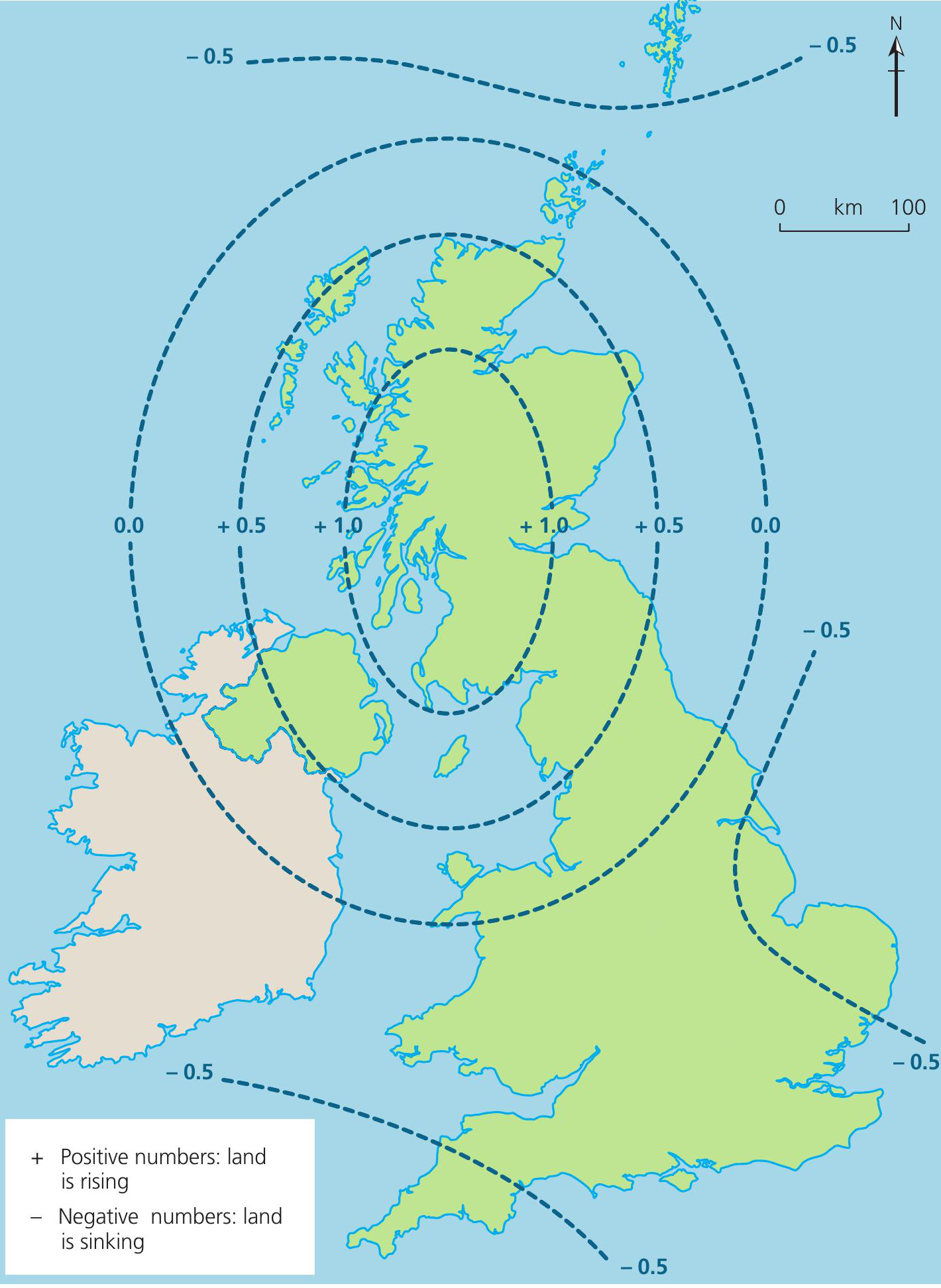
Study Figure 1. Explain the role of isostatic processes in causing changes in relative sea level. (6 marks)
This short question is marked using levels, but you might want to approach it by thinking of writing three extended points. Figure 1, which a good answer needs to refer to, shows the current rate of relative change in sea-level for the British Isles. The data in mm are ‘net change’, i.e. the sum of both isostatic and eustatic change, but you are being asked to only explain the role of isostatic change in generating these sea-level changes. Answers cannot drift into eustatic explanations (see Box 2). Scotland and parts of northern England are rising relative to sea-level (+0.5mm, +1mm), whereas parts of England’s east and southwest coasts are sinking (–0.5mm). Think about how you could write three extended explanations related to ‘isostatic change’, each linked to Figure 1, as a way to score 6 marks.
Your organisation does not have access to this article.
Sign up today to give your students the edge they need to achieve their best grades with subject expertise
Subscribe




